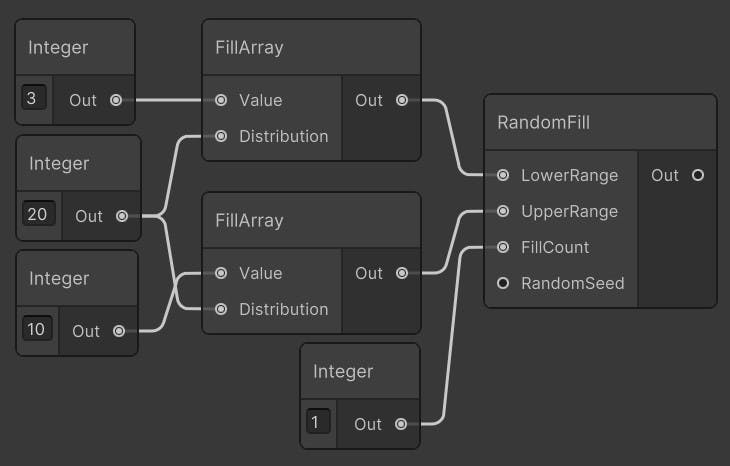Random Fill
Creates an array, similar to Lower/UpperRange array structure, with additional array nest. The additional nest will be FillCount length and filled with random values between LowerRange-UpperRange.
Inputs
- LowerRange: Lower range of random number (inclusive). If it is scalar and UpperRange is an array, calculations will adapt to UpperRange’s array structure (float, int, Vector2, Vector2Int, Vector3, Vector3Int, Vector4)[]-[][]-[][][]-[][][][]
- UpperRange: Upper range of random number (exclusive). If it is scalar and LowerRange is an array, calculations will adapt to LowerRange’s array structure (float, int, Vector2, Vector2Int, Vector3, Vector3Int, Vector4)[]-[][]-[][][]-[][][][]
- FillCount: Number of elements to fill between LowerRange-UpperRange. If scalar (int), applies the same fillCount to all calculations, if array (int), the same structure with Lower/UpperRange, applies varying fillCount to calculations.
- RandomSeed (optional): Random number generator seed. If not connected, the node will use Graph’s random number generator (int)
Outputs
- Out: Random array based on Distribution port or Lower/UpperRange distribution
Remarks
LowerRange and UpperRange must have same dimensions. If ranges are T type, Out will be T[] type
Example
